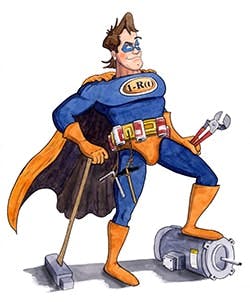Greenwashing: Playing with data for success
In the statistics community, playing with data is something we love to do. The great thing about data is we can make it say whatever we want and define success or failure how we want.
Statisticians talk about the 80/20 rule to extrapolate data. 80% of their time is spent in preparing the data while the other 20% of the time is spent complaining about preparing that data. What is great about data is if at first you fail in winning people over with your data, just call it Version 1.0. Then try again later and revise it until you get the outcomes you are looking for.
Data is like people—interrogate it hard enough and it will tell you whatever you want to hear. The goal is to look green in all you do, not look for opportunities to be better. The more green in metrics equals more success. Here are a few metrics that you can make look good:
PM Compliance. According to the SMRP Best Practices Guide, PM Compliance is defined as “the percentage of preventive maintenance (PM) and predictive maintenance (PdM) work orders that were completed past the expected date (e.g., overdue) for a given completion date range. The overdue variance is calculated for each work order. It is recommended that results are grouped in ranges of overdue variance (%) and by criticality rank.”
And the objective of this metric is listed as “to capture and trend PM and PdM work order completion information and ensure the assets are being managed according to their criticality.”
There are a few ways to make yourself look good with this metric. First, you can just pencil whip all PMs as soon as they launch out of the system. You will always be green, denoting just how effective your PM program is. The second, easier way is to just create one PM and make sure it gets completed on time, there again showing 100% completion and very effective at making you look good.
Overall Equipment Effectiveness (OEE). According to the SMRP Best Practice Guide, Overall Equipment Effectiveness is defined as: “a measure of equipment or asset performance based on actual availability, performance efficiency, and quality of product or output when the asset is scheduled to operate. OEE is typically expressed as a percentage.”
And the objective of this metric is listed as: “this metric identifies and categorizes major losses or reasons for poor asset performance. It provides the basis for setting improvement priorities and beginning root cause analysis. OEE also fosters cooperation and collaboration between operations, maintenance, and equipment engineering to identify and reduce and/or eliminate the major causes of poor performance. Maintenance alone cannot improve OEE.”
How to develop a proper asset hierarchy
3 steps for creating an environment of personal responsibility within your facility
50 ways to be the leader you know yourself to be while trampling everyone in your path
It has been our experience that the performance bucket is always the area lacking due to speed losses and minor stops. The best way to raise your OEE is to do the following:
- Never use the design rate of the equipment. Hide the speed losses behind what we call theoretical max, or just an average that we think the machine can output. This will raise your performance bucket dramatically.
- Next, make everything that you can planned downtime, as planned downtime should not hit your OEE metric.
- Last, make sure your Quality number is always above 100%. If you have sensors that tabulate your quality metric in a Visual Plant System, just have people flag the photoeye at the end of the line a few hundred times to show that you outputted more than is actually possible to produce.
With these tricks, there is no doubt you should hit well over 100% OEE. If you are not over 100%, you are not doing it right!
We will continue next month on sharing these valuable tips on how to make yourself look good through metrics. Hope this helps!

